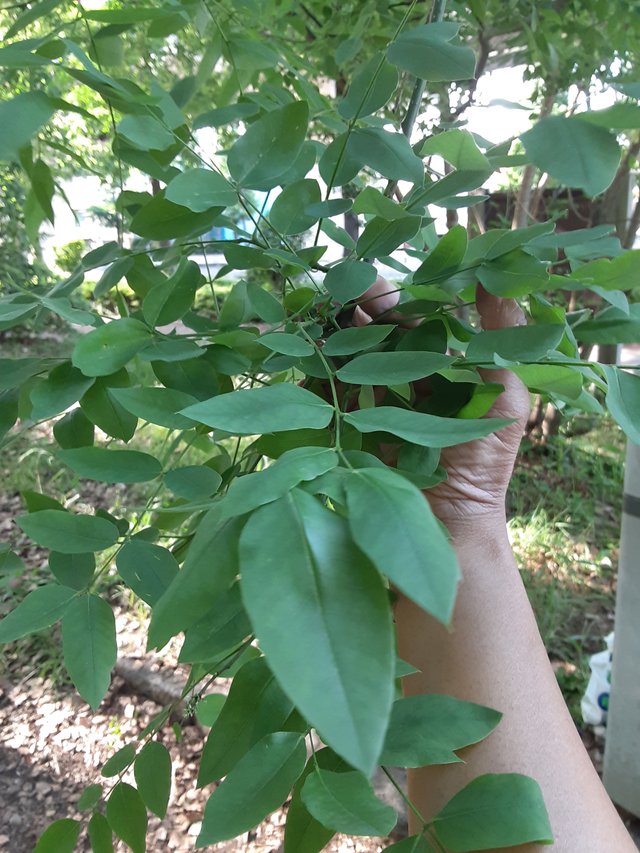
Styphnolobium japonicum, also known as the Japanese Pagoda Tree, Chinese Scholar Tree, or Scholar Tree, is a stunning deciduous tree admired for its elegant form, attractive foliage, and fragrant blooms.
Leaves of the Japanese Pagoda Tree:
The captivating beauty of the Japanese Pagoda Tree extends to its leaves. These are pinnately compound, meaning they consist of a central stalk (rachis) with numerous leaflets arranged on either side. The number of leaflets can vary from 7 to 17, with each leaflet having an oval to lanceolate shape.
Color and Texture: The upper surface of the leaflets boasts a rich, glossy green that shimmers in the sunlight. In contrast, the undersides display a beautiful glaucous quality, appearing bluish-green or grayish-green due to a waxy coating that helps retain moisture.
Leaf Arrangement: The leaves are arranged alternately along the branches, creating a light and airy feel to the tree's overall structure. This arrangement also allows for maximum sunlight penetration through the canopy, fostering healthy growth throughout the tree.
Seasonal Change: The Japanese Pagoda Tree is a deciduous tree, meaning it sheds its leaves in the fall. Before dropping, the leaves put on a brief but lovely show, turning a soft yellow before gracing the ground with a golden carpet.
Beyond Aesthetics:
The leaves of the Japanese Pagoda Tree play a vital role in the tree's health and function. The broad surface area of the leaflets allows for efficient photosynthesis, converting sunlight into energy for the tree's growth and development. Additionally, the waxy coating on the undersides helps minimize water loss, particularly beneficial during hot and dry periods.
Interesting Fact: Traditional Chinese medicine has utilized various parts of the Japanese Pagoda Tree, including the leaves, for centuries. However, it's crucial to note that ingesting any part of the tree, especially the seeds, can be toxic. It's always best to admire this beauty from afar and avoid internal consumption.
Overall, the leaves of the Japanese Pagoda Tree are a key element in its visual appeal and ecological function. Their graceful form, vibrant color contrast, and seasonal transformation add to the tree's undeniable charm, making it a captivating addition to any landscape.
Ref.:
 |  |
Upvoted! Thank you for supporting witness @jswit.
Downvoting a post can decrease pending rewards and make it less visible. Common reasons:
Submit